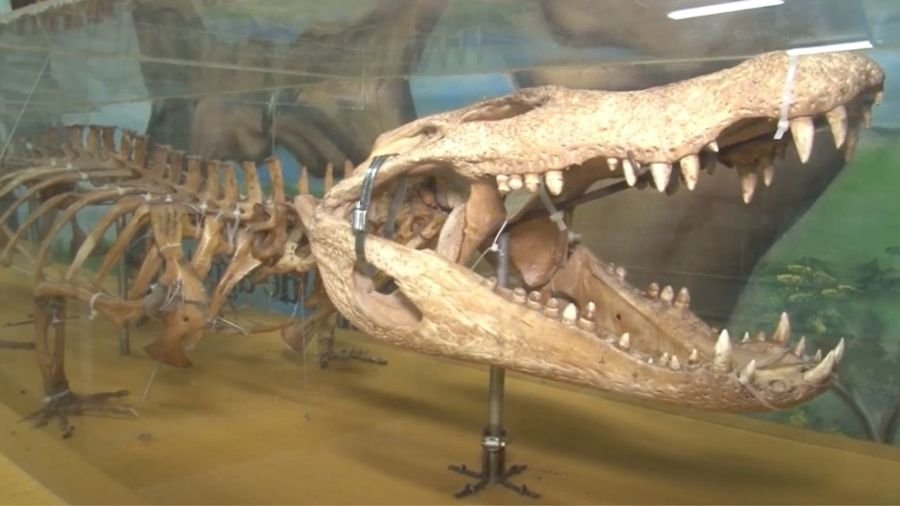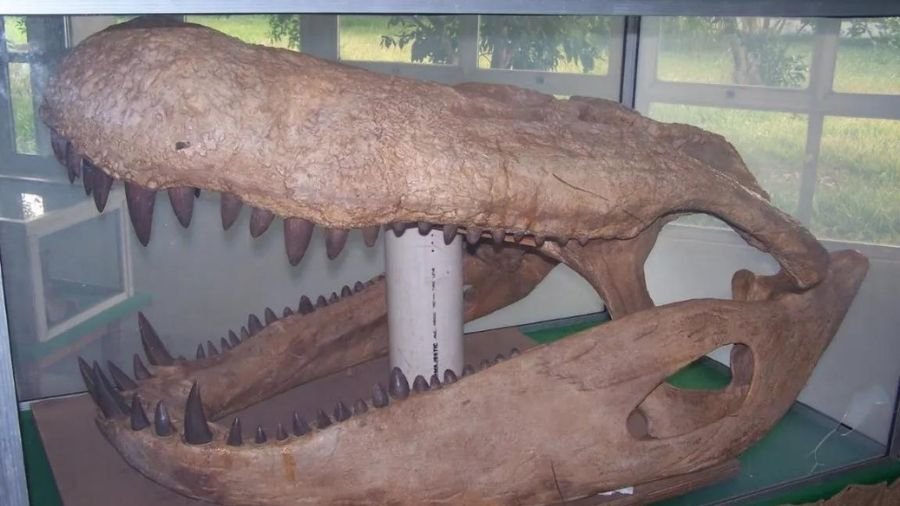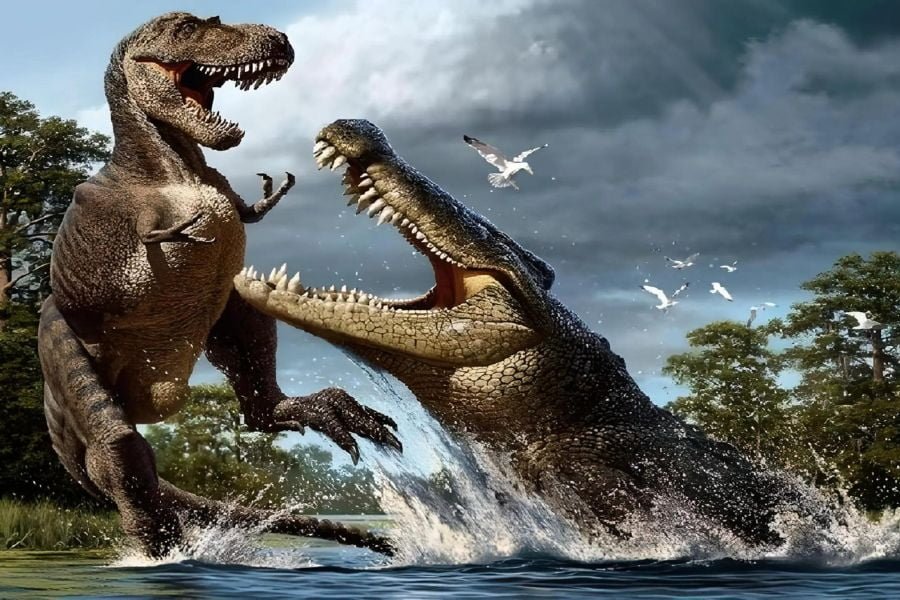Purussaurus brasiliensis – the biggest alligator that ever lived
The Brazilian prehistoric alligator possessed enormous strength and size. Its bite was twice as strong as that of Tyrannosaurus Rex and twenty times stronger than that of a modern white shark. The Purussaurus brasiliensis was at the top of the food chain, in the Miocene epoch, and was considered the king of the Amazon swamp. Shall we get to know a little about this colossal giant? Enjoy reading and have fun!

Discovery of Purussaurus brasiliensis
The first fossil of the super alligator was found in 1892, on the banks of the Purus River, in the Amazon, and classified as a alligator by the then-head of the Museu de Botânica da Amazônia (Botany Museum of the Amazon – today, non-existent), João Barbosa Rodrigues. Extinct for 8 million years, it would become known as the largest crocodylomorph to have lived on our planet at any time.
For many decades, the huge reptile was forgotten by scholars, however, in 2015, new studies began to be published on the animal, taking it out of science’s oblivion. More recently, in 2021, a new scientific article on the species, crossing information with other studies, was published and reinforced everything that had already been proven. The Purussaurus brasiliensis, also known as the Purus River lizard, is indeed the largest alligator ever recorded in the world.
New fossils were recently found on the border between Acre and Amazonas, close to the waters of the Purus River (which runs through Acre, Amazonia, and Peru), including the jaw and part of the skull.
The most complete fossil material that exists about Purussaurus brasiliensis is a skull with a complete jaw, and they are at the Federal University of Acre. Even if the recovered fossil material is substantial, the species can still be considered poorly understood.

Features of Purussaurus brasiliensis
To make it clear who we are talking about, it is necessary to mention that there are three types of purussaurus:
- Purussaurus neivensis;
- Purussaurus mirandai;
- Purussaurus brasiliensis – this one being the largest of all and the subject of our article.
In a fight between the Tyrannosaurus Rex and the Purussaurus brasiliensis, the T-Rex would certainly lose. This fight would not be possible, since the giant alligator lived 50 million years after the T-Rex became extinct, but even so, it is interesting to imagine, isn’t it?

Only the skull of this animal measures almost 5 feet and the total size of its body can exceed 39 feet in length. Weighing more than 8 tons, there is not and never was an alligator bigger than this one. The anatomy of its robust, short, and wide skull and large nostrils, most likely, according to scholars, was responsible for the powerful bite that the animal had. It is estimated that it was capable of reaching 7 tons of force.

Food
A super predator with such brute strength and robustness certainly didn’t eat lightly. Studies claim that Purussaurus brasiliensis consumed around 88 pounds of food daily. That’s at least 15 times the amount of food a modern-day alligator consumes in a day.
Due to the strength of its bite, it occupied the top of the food chain of its time, being able to attack prey much larger than itself. It is believed that the super alligator’s diet was based on all the fauna it could reach and with whom it shared its habitat: giant sloths, giant tortoises, birds, fish, and rodents of the time.
The Miocene epoch was marked by the existence of large mammals in the Amazon region and the size of its prey was no problem for this colossal alligator. Like its modern relatives, it probably dragged its prey underwater, drowned it, and then ate the pieces, which it twisted off without chewing.
Habitat and Extinction
The huge alligator inhabited swamps and rivers of the Amazon rainforest and northern territories of South America. It shared its habitat with other animals, which served as food. One of its neighbors, the giant sloth, could reach a size of 16 feet, which provided a pleasing meal for Purussaurus brasiliensis.
With so many advantages, the extinction of this huge predator might seem unlikely, however, it was no match for the mountains. That’s right, the extinction of Purussaurus brasiliensis was due to a geological phenomenon: the emergence of the Andes Mountains.
At the end of the Miocene, the period in which the purussaurus lived, the territory they inhabited was basically made up of wetlands, which was quite conducive to the genus of giant alligators. However, its size was both its advantage and also its vulnerability. The geological environment in this epoch was constantly changing on a large scale. When swamps began to give way to river systems, purussaurus saw its habitat greatly reduced in size, affecting its prey and food equally. And, when the most dramatic geological changes of the time occurred, the rise of the Andean mountains, the great predator was defeated.
Many smaller animals were able to adapt and survive in the smaller available space, however, the large predators were not so lucky.

Conclusion
One of the authors of the study published in 2015, Tito Aureliano, from the Federal University of Pernambuco (UFPE) said to BBC News: “The constant rise of the Andes and the change from the Amazonian swamp system to the river systems we have today has greatly reduced the area for these giant animals to live. By reducing the number of prey as well, it quickly caused the extinction of the Amazonian super alligators. It is a lesson for us that it doesn’t always take a meteor to cause the extinction of a successful species group.”




